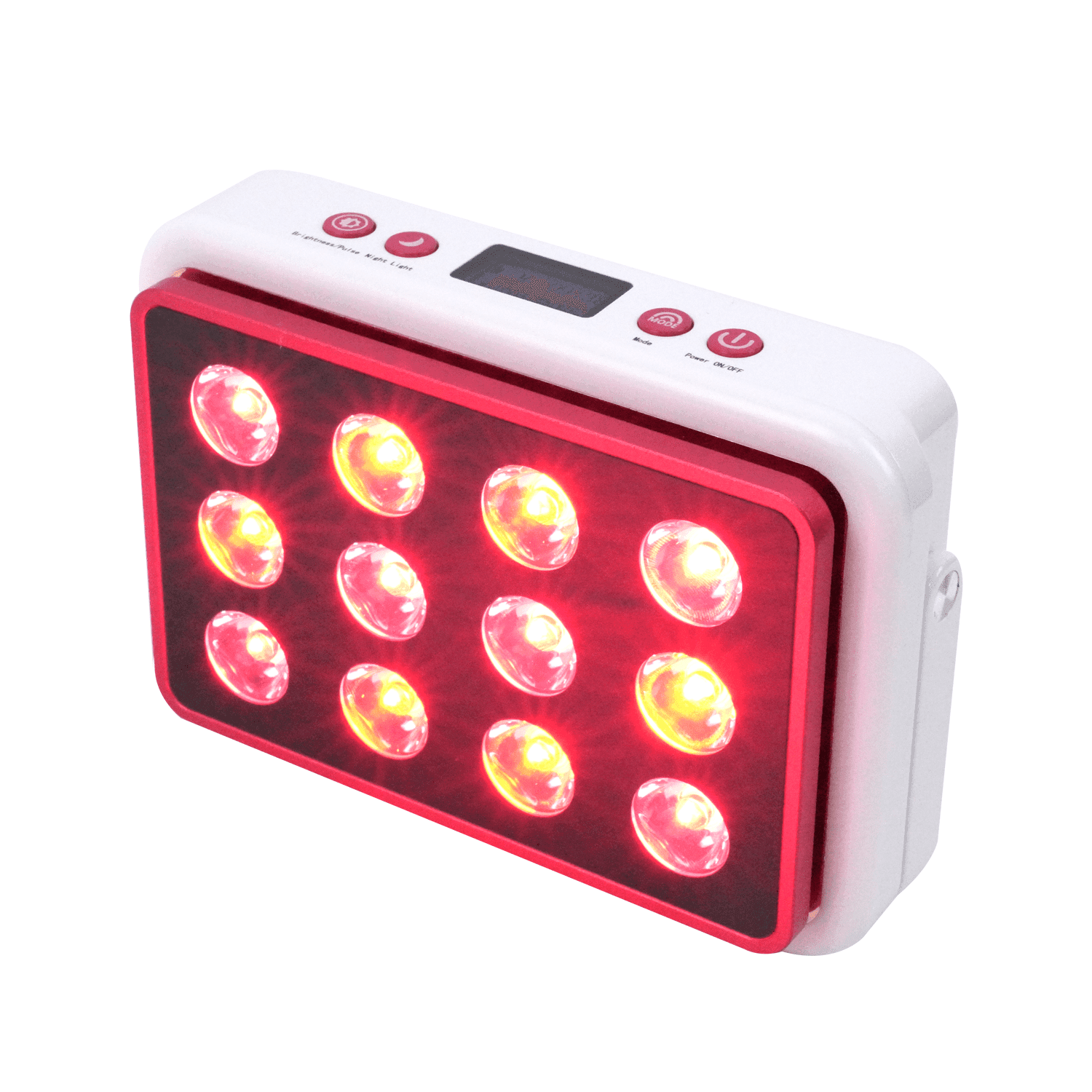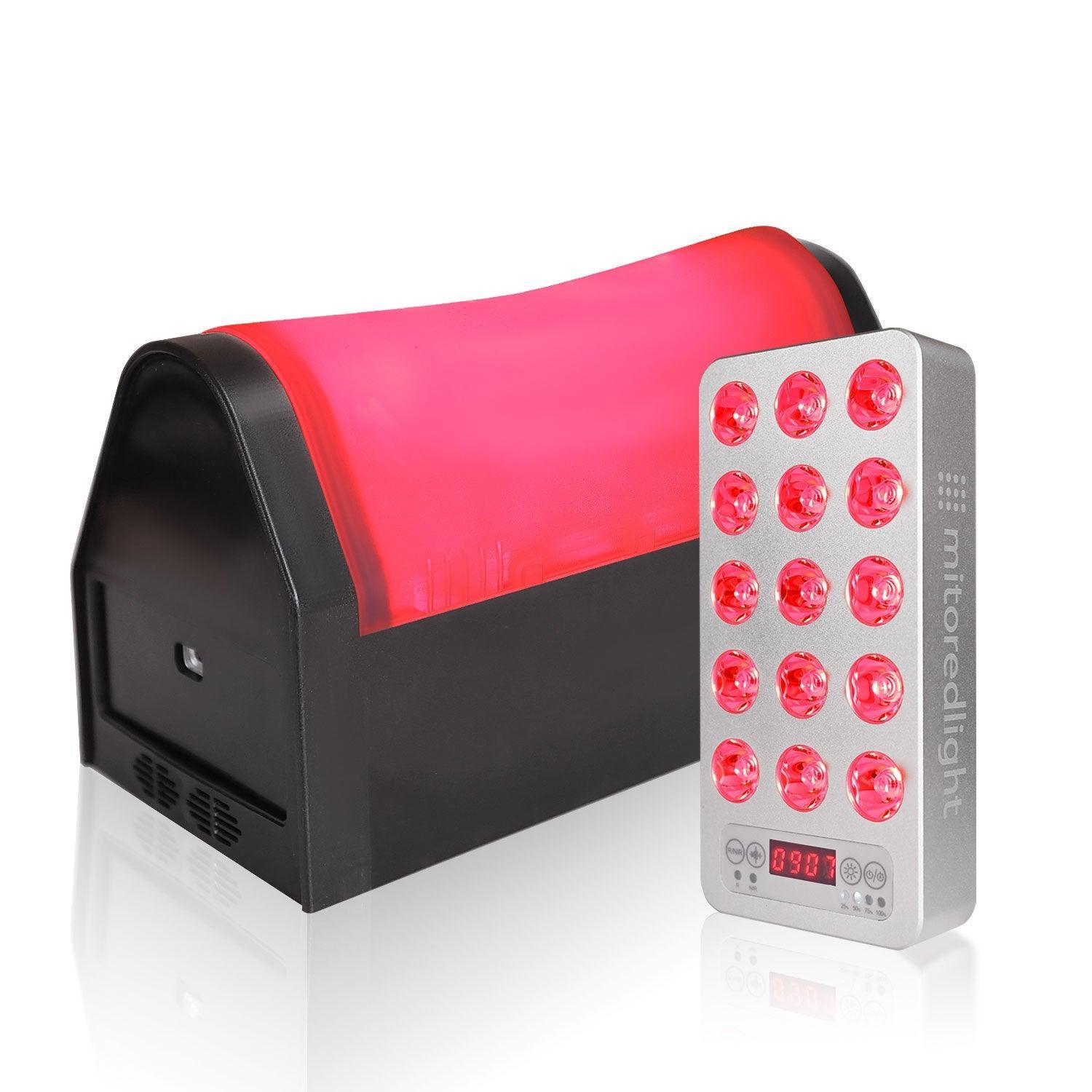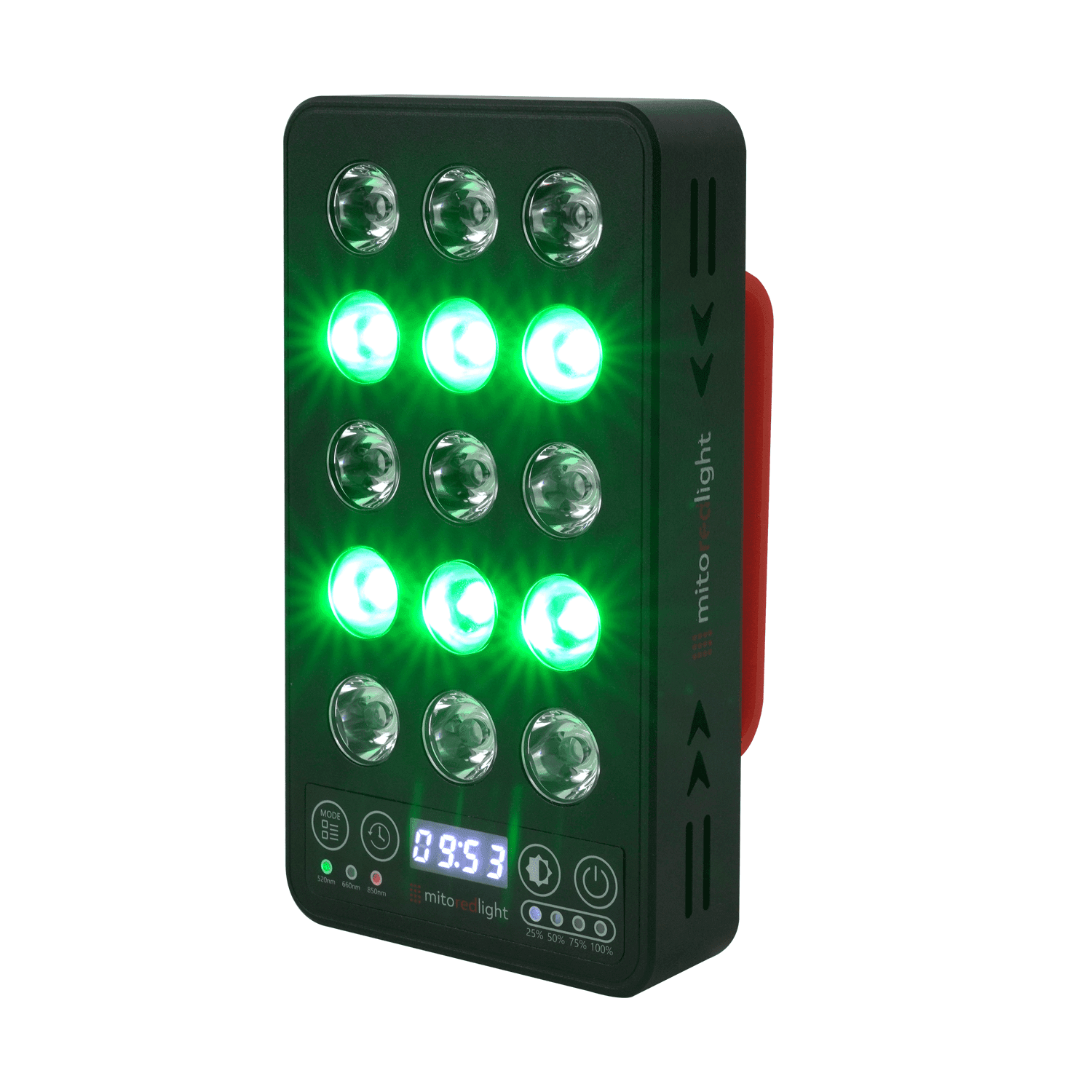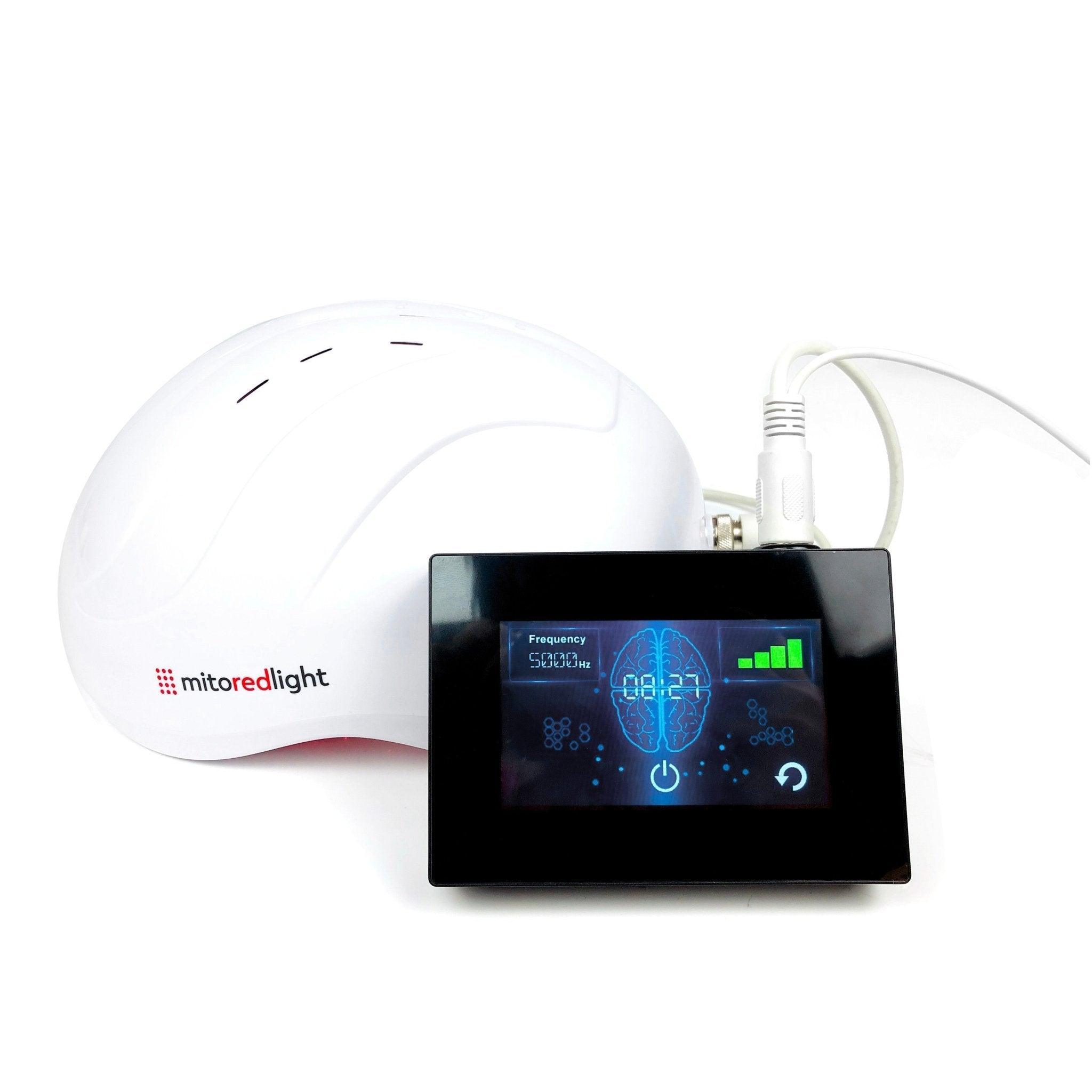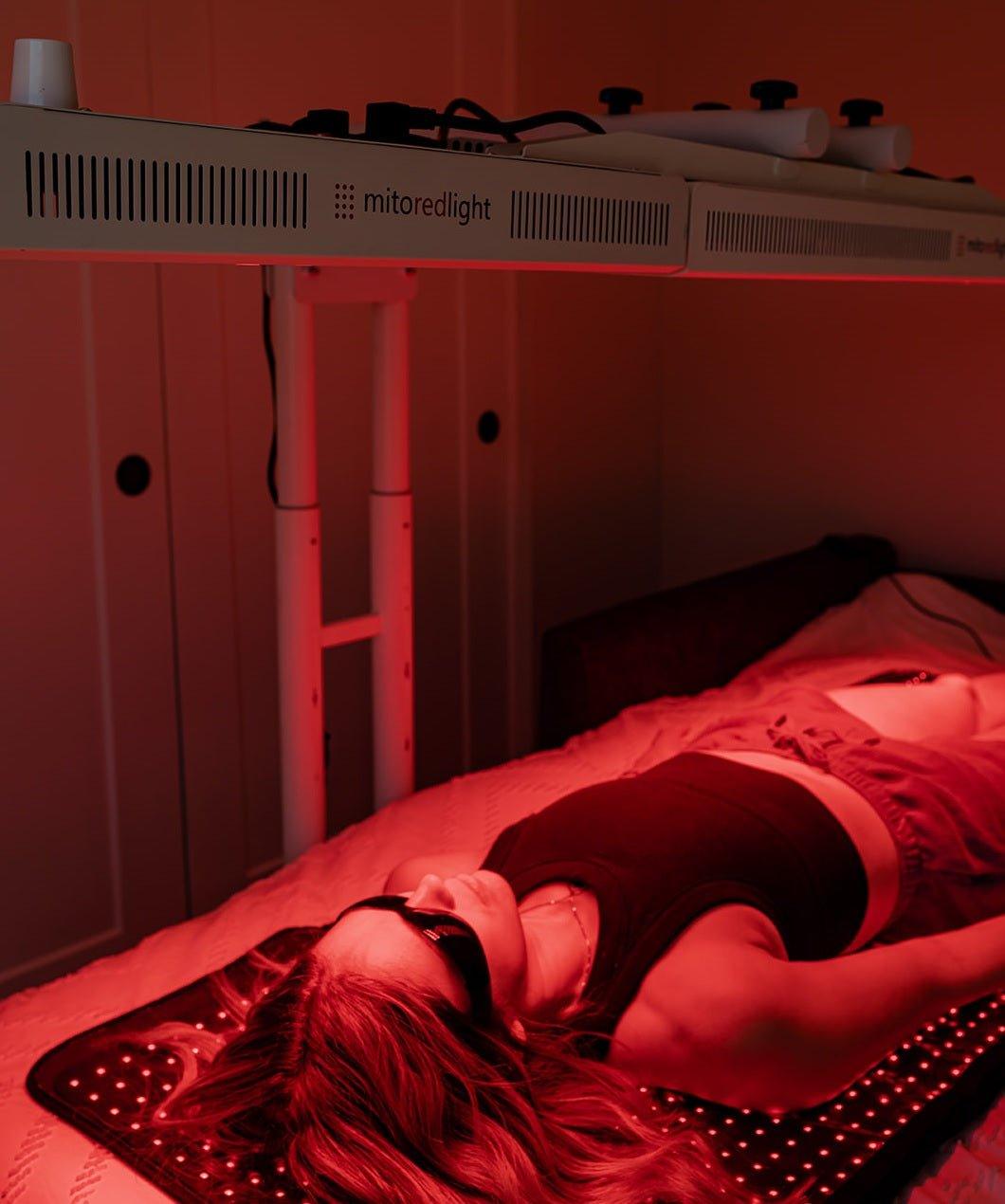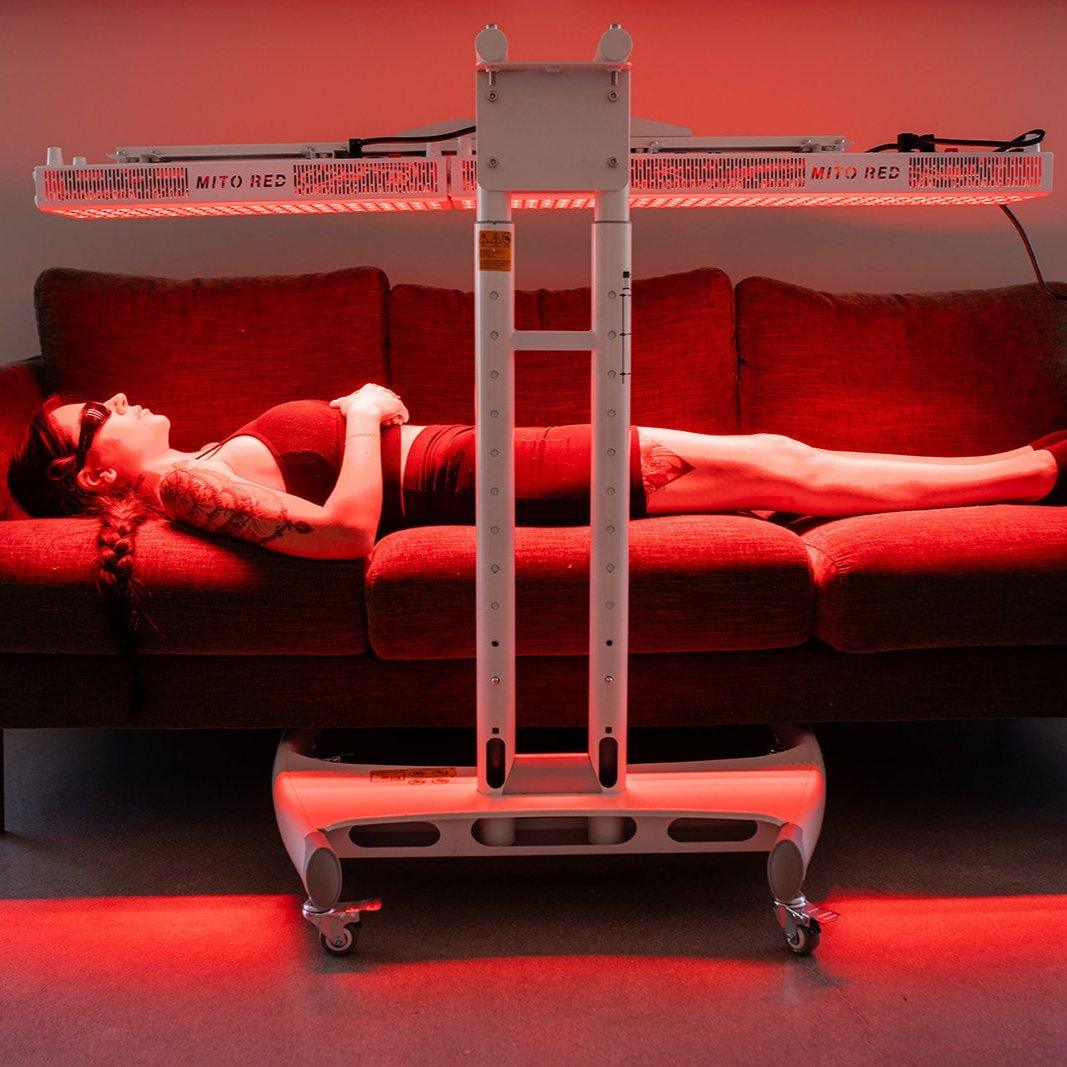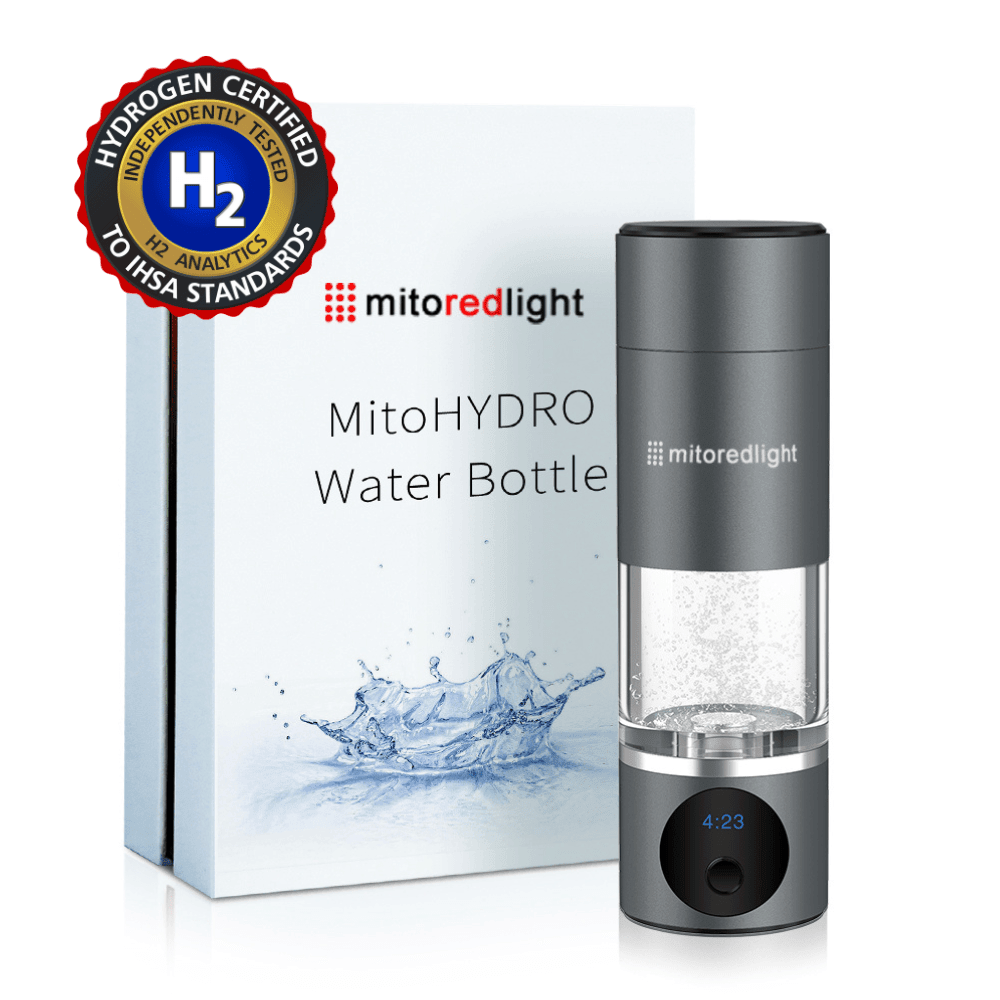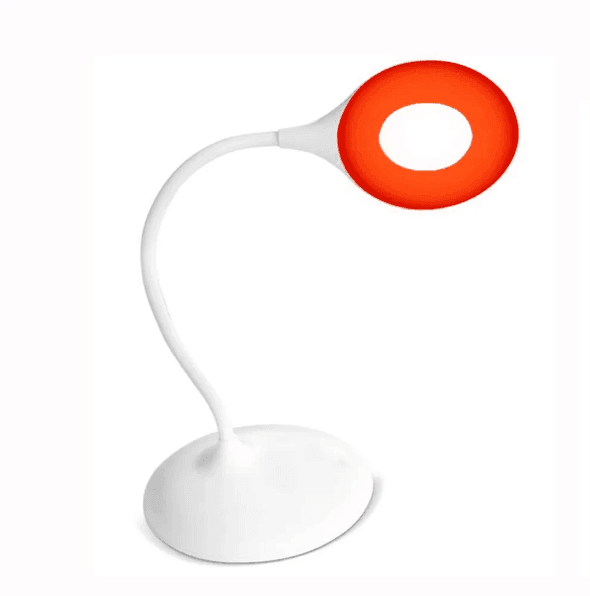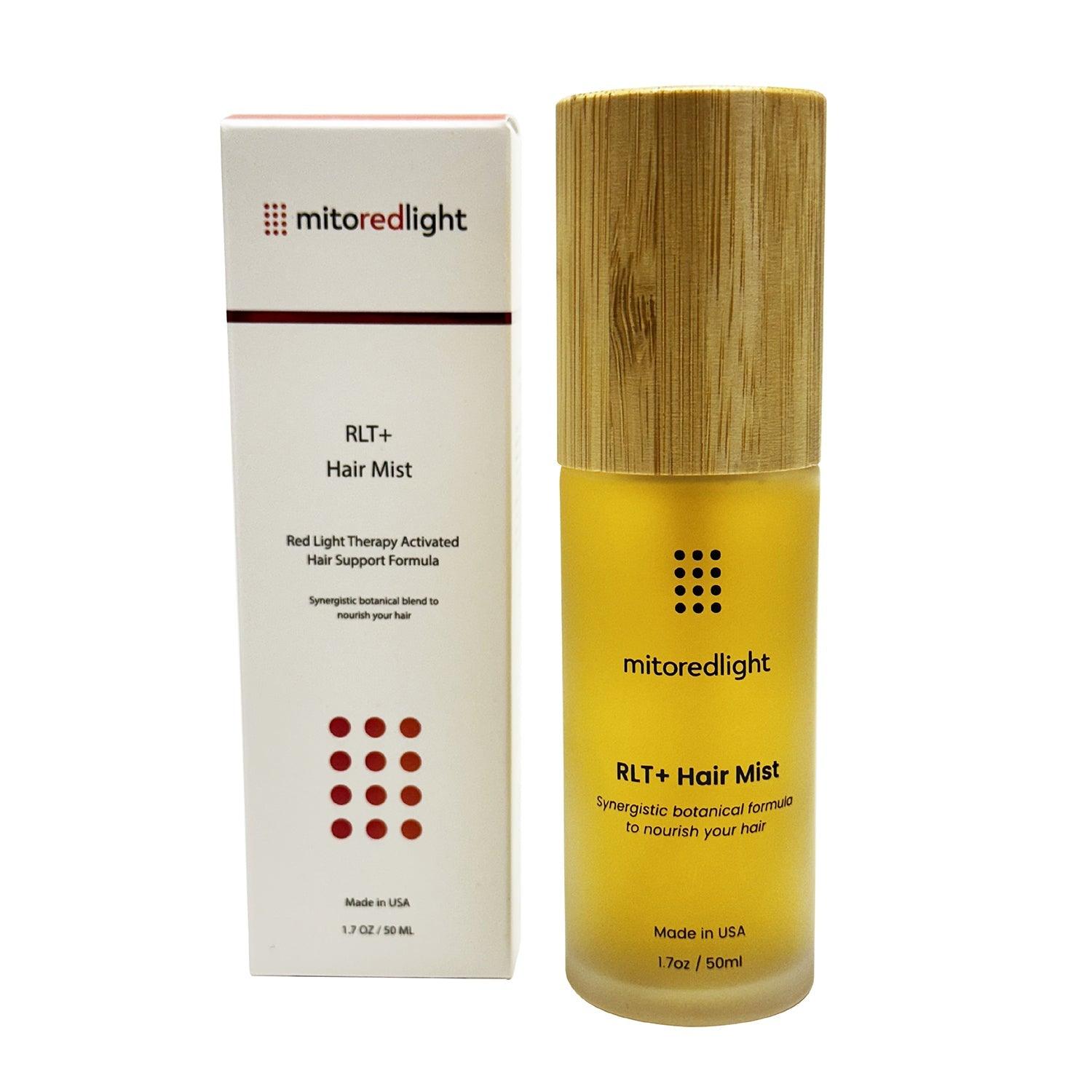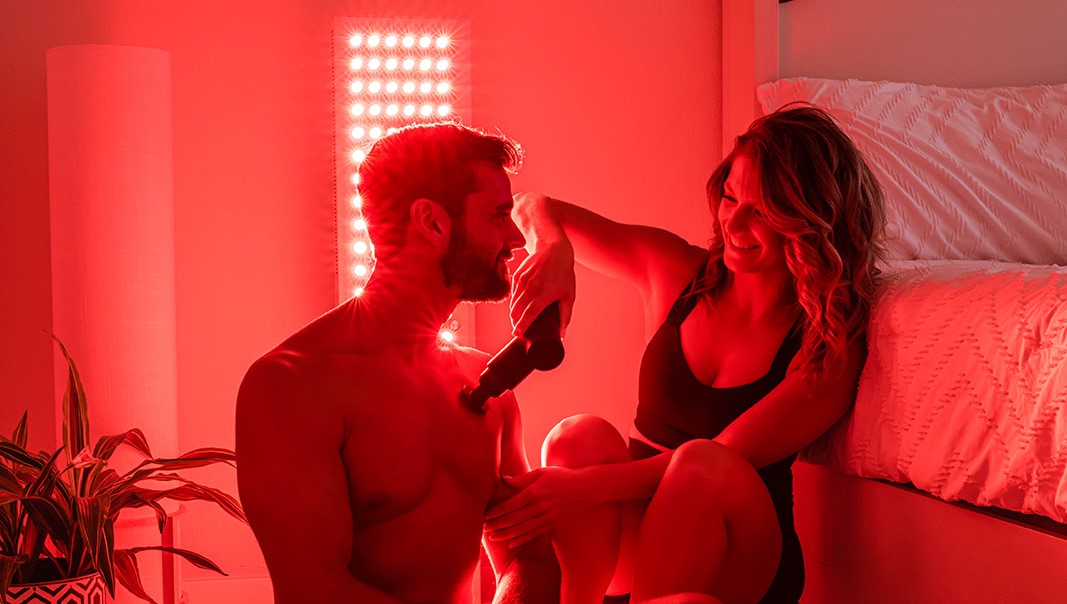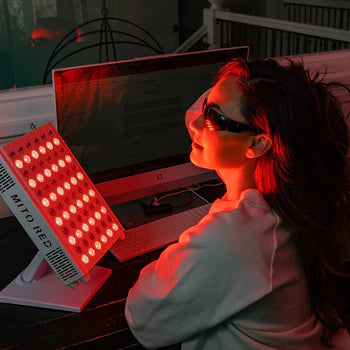Medically Reviewed by | Heidi Wright, BSN, RN, PCCN
Pain in your joints may not seem too terrible at first, but over time, joint pain that is consistent can significantly impact your quality of life. Prolonged joint pain is typically due to some type of arthritis, and although there is no cure for arthritis, there are ways to manage its symptoms and possibly prevent it from worsening.
Before you can target your arthritis symptoms, it’s important to understand what kind of arthritis you have and what treatment options are available. In addition to working closely with your healthcare provider to make the best decisions for your arthritis care, red light therapy may help ease some of the discomfort and improve your quality of life.
What Is Arthritis?
There are nine different types of arthritis, but the two most common forms are osteoarthritis and rheumatoid arthritis. These affect the joints in different ways.
Osteoarthritis
This form of arthritis occurs due to wear and tear on the cartilage that supports the joints. This can happen due to normal use with age or as the result of prolonged overuse due to sports or other activities. Cartilage protects the joints from damage and prevents bone from rubbing against bone.
At some point, it is likely that everyone will experience some osteoarthritis in some area of their body. The knees and hands are usually the places where arthritis develops quickly.
Rheumatoid Arthritis
This type of arthritis is an autoimmune disorder that causes the body’s immune system to incorrectly attack the lining (called the joint capsule) that surrounds the body’s joints. This causes the joint capsule to become inflamed and swollen. Rheumatoid arthritis is progressive, and if not properly managed, it may lead to the destruction of cartilage and bone.
Early detection is key to slowing the progression of rheumatoid arthritis. If you develop symptoms of arthritis, getting an early diagnosis is key. Your healthcare provider can take X-rays and determine if your symptoms align with rheumatoid arthritis, osteoarthritis, or another form of arthritis.
What Causes Arthritis
The causes of rheumatoid arthritis are not well understood. As with most autoimmune disorders, the reasons why the body’s immune system incorrectly attacks its own healthy cells are not clear.
For patients who have developed osteoarthritis, there are more understandable causes.
- Genetics. There is a genetic component to both osteoarthritis and rheumatoid arthritis. If you have a direct family member who suffers from one of these inflammatory joint conditions, you are more likely to develop them too.
- Age. With age, your likelihood of developing arthritis increases. The more wear and tear we have on our joints, the more likely they will experience damage.
- Sex. Some types of arthritis are more likely to occur in women than in men. However, gout, another form of arthritis, occurs more frequently in men than in women.
- Injuries. That old high school knee injury could mean you’re more likely to develop arthritis in the joint you previously injured. Prior joint injuries can result in the development of arthritis in later years.
- Obesity. Carrying excess weight can place a strain on your joints, making you more likely to develop osteoarthritis.
Although you might think of arthritis as an age-related illness, it can occur in younger people, especially those who play sports or who sustain injuries. Getting a diagnosis is the first step in feeling better and what you can do for pain relief.
What Are the Standard Courses of Treatment for Arthritis?
The type of arthritis you have will determine your course of treatment, but the two-point end goal is typically the same:
- Prevent the progression of arthritis.
- Manage pain.
Rheumatoid arthritis patients may be given medications to help prevent joint deformity, while osteoarthritis sufferers may be prescribed a routine of NSAID pain relievers or topical counterirritants to help relieve pain.
It can be overwhelming to learn that the medications you take may not relieve all of your arthritis pain, which is why many arthritis patients are involved in arthritis pain-management strategies that involve modified movement, continued activity to reduce stiffness in the joint, and maintaining a healthy weight.
In addition to these methods, Heidi Wright, Registered Nurse, notes that “Red light therapy is a complementary therapy that can help you manage your pain in a non-invasive and non-medicated way in conjunction with your prescribed medical treatment plan.”
What Is Red Light Therapy?
Red light therapy is part of a system of photomedicine that uses different wavelengths of light to for various concerns, including wound healing, muscle pain, muscle and joint stiffness, skin conditions, and potentially even providing anti-aging benefits. It is sometimes referred to by other names, like photobiomodulation, LED light therapy, low-level light therapy or low-level laser therapy (LLLT), and near-infrared light therapy.
There are two different types of red light therapy: red light and near-infrared light.
- Red light. This has a wavelength that measures between 620 nanometers and 700 nanometers. This light is effective on the skin and on deeper layers of the skin.
- Near-infrared (NIR) light. This light has a wavelength that measures between 800 nanometers and 900 nanometers. This lower-energy, longer wavelength can penetrate the skin and reach soft tissue and hard tissue.
How Does Red Light Therapy Work?
Red light therapy works by interacting with the very building blocks of our entire bodies: our cells. Our cells make up every tissue, organ, and system in the body. They are foundational to our health. When there’s a problem with our cells, there is a problem system-wide.
Over time, our cells begin to lose function. This is due, in part, because their mitochondria, tiny organelles inside the cells, begin to produce less cellular energy. The mitochondria of the cell produce adenosine triphosphate or ATP. This is the energy molecule that the cells use to carry out cellular processes. With less ATP, the cells lose function.
Red light, however, is able to modulate the cellular energy creation process. It is absorbed by a molecule called cytochrome C oxidase, which helps mitochondria produce ATP more efficiently. Red and near infrared light help increase cellular energy, which translates into better cellular function overall.
What Are the Ways Red Light Therapy Might Help With Arthritis?
If you’re suffering from arthritic pain, you should know that red light therapy may be an excellent way to support your body.. Here are 5 possible mechanisms:
1. Reducing Inflammation
Inflammation is the body’s response to injury and illness. However, inflammation that doesn’t go away can lead to pain and stiffness, especially in the joints. Near-infrared light may be able to penetrate to the bone, and target inflammation at its source, activating the body’s natural cellular responses to help reduce inflammation and pain associated with inflammation.
2. Assisting with Tissue Repair
Red light therapy for wound repair was a technology discovered by NASA and later harnessed by the U.S. military. Researchers found that red light was able to speed up wound recovery time, and we can now use this same technology to address tissue repair as it relates to arthritis. Red light targets fibroblasts, cells that are responsible for collagen production.
Collagen is an integral part of cartilage, and supporting collagen production in the joints is essential for helping ensure joints are property cushioned and supported.
3. Pain Management
Just 15-30 minutes per day of red light therapy sessions has proven effective in reducing pain levels by up to 50%, according to one study. In this study, 50 patients with osteoarthritis were given either a placebo device, a red light device, or a near-infrared light device to use on their arthritic knees twice per day.
At the end of the study, the placebo group reported no change in their pain levels, while both the red light and NIR light patients reported a 50% decrease in their pain levels.
4. Support for Mobility
One of the side effects of arthritis is that joint inflammation can limit your mobility. The effectiveness of red light therapy to improve mobility was explored by a meta-analysis of 13 randomized controlled trials. In it, red light was shown to improve mobility and decrease the feeling of stiffness in the joints, especially in the morning upon waking.
5. Improved Circulation
Getting blood flow to every part of the body is important. It supports healing and ensures cells everywhere are getting the oxygen and nutrients they need. Red light therapy helps improve blood circulation, which can help arthritis sufferers. Increased blood flow can help keep joints mobile and improve your ability to perform daily tasks without pain.
How To Use Red Light Therapy
You can use red light therapy by targeting the areas that are affected.. Red light is available as red light therapy panels, wearable devices, and even chambers that most closely resemble stand up tanning beds.
You can find red light therapy devices at some medical facilities, medspas, or even at some gyms. However, it’s important to remember that the benefits of red light therapy are best established after repeated use, and insurance doesn't typically cover photobiomodulation therapy. Instead, you can invest in a device for red light therapy at home.
You can use red light therapy for up to 5-20 minutes per day, regularly. Science around red light therapy shows that there are diminishing returns from and that more isn't necessarily better.
There’s no better way to get the red light therapy you want than in the privacy and convenience of your own home. For that, you’ll want Mito Red Light.
Why Mito Red Light
Mito Red Light is your go-to source for high-quality red and near-infrared light therapy devices. Our lights have more diodes per square inch than our competitors, cutting down on dead space.
We also third-party test all our devices to ensure they are within the therapeutic window of as guided by scientific testing and research. Our devices also feature Enhanced Spectral Energy Output™, a technology that delivers energy across a wider spectrum band of red and NIR light than commonly found in other LED devices. For a device that delivers the highest quality and levels of red light, Mito Red Light is the solution.
Related Articles:
- Red Light Therapy Benefits Overview
- Everything You Need to Know About Red Light Therapy and INFLAMMATION
- Top Tips for Optimal Joint Health
- What Are Some Options For Joint Pain?
Sources:
Arthritis - Symptoms and causes | Mayo Clinic
Key Public Health Messages About Arthritis | CDC
Transcranial near-infrared light in treatment of neurodegenerative diseases | Frontiersin.org
NASA Research Illuminates Medical Uses of Light | Spinoff.NASA.gov
Low level laser therapy for osteoarthritis and rheumatoid arthritis: a metaanalysis | PubMed
DISCLAIMER: Mito Red Light devices are not clinically proven to diagnose, treat, cure, or prevent any medical conditions. Mito Red Light devices are Class II general wellness devices aimed at affecting the body through topical heating and supporting cellular function. The scientific studies referenced in this article are for informational purposes only. To see a list of precautionary warnings and contraindications, click here.



